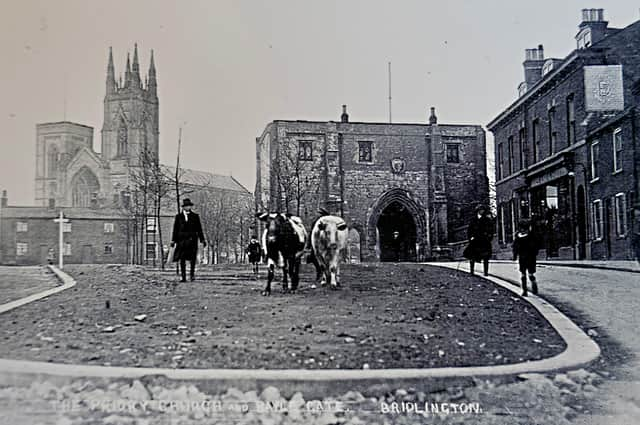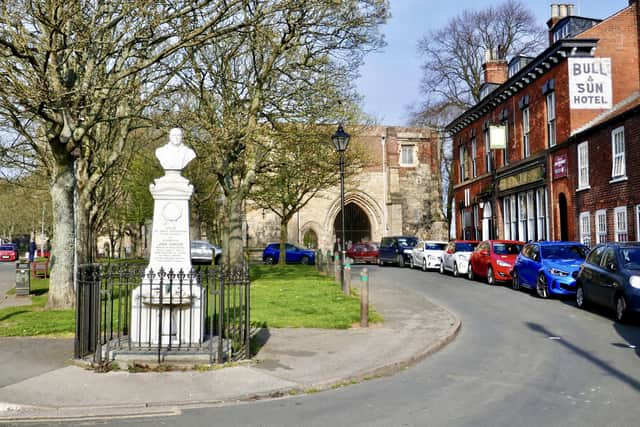The Now and Then column with Aled Jones: Looking at the changes near the Baylegate


Mr Jones features one of his vintage postcards, complete with cows in the area, and contrasts the scene with a modern day photograph.
Mr Jones said: “Here is a wonderful vintage postcard showing Baylegate around the time of the First World War. It was taken from Kirkgate looking towards the Bayle after house clearance, hence the rubble in the foreground.
Advertisement
Hide AdAdvertisement
Hide Ad“Originally a narrow lane, Baylegate contained a number of very old houses, crowded on both sides, which led right up to the Bayle itself. Think of The Shambles in York and you get an idea of what it used to be like. The houses were removed to widen the road for modern traffic, yet destroyed so much character and heritage in the process.


“I loathe to see historic roads and buildings fall to the wrecking crew.
“Many other notable changes have taken place in the area. The large house to the right became the Bull and Sun Inn c.1920, but long before then it was a private Georgian residence and afterwards a draper’s shop. The latter was still its function when the original photo was taken, hence the elegant shop frontage with ‘D’ above denoting a drapery.
“Note also the charming row of 18th century cottages to the left which, like the houses on Baylegate, were destined to be destroyed to make way for road improvement.
Advertisement
Hide AdAdvertisement
Hide Ad“An iconic part of Bridlington life, in bygone days, were the two annual fairs held on Church (Low) Green, at which farmers would buy and sell horned cattle. The farmers shown in the postcard are clearly returning home from one of the fairs with their prized purchases. Sadly, the fairs were discontinued several decades ago.
“Looming in the background is, of course, the fabulous Priory Church, which dates back to the 12th century and was originally a monastic house of great wealth and power.
“The Priory even had its very own saint, St John of Bridlington, who was born in Thwing in about 1320.
“He was renowned for his sanctity of life and carrying out many miracles, including walking on the sea to rescue stricken fishermen.
“Quite a wondrous feat!
Advertisement
Hide AdAdvertisement
Hide Ad“So popular, in fact, became the shrine of St John of Bridlington with pilgrims, that it soon gained the attention of the King of England, in fact two monarchs to be exact, Henry IV and Henry V, who visited it in 1407 and 1421 respectively, the latter accompanied by his new queen Catherine of Valois.
“Take a close look at the postcard and you will see young saplings growing in the middle distance. Now fine mature trees, they line the route to the Priory in front of Church Green.”